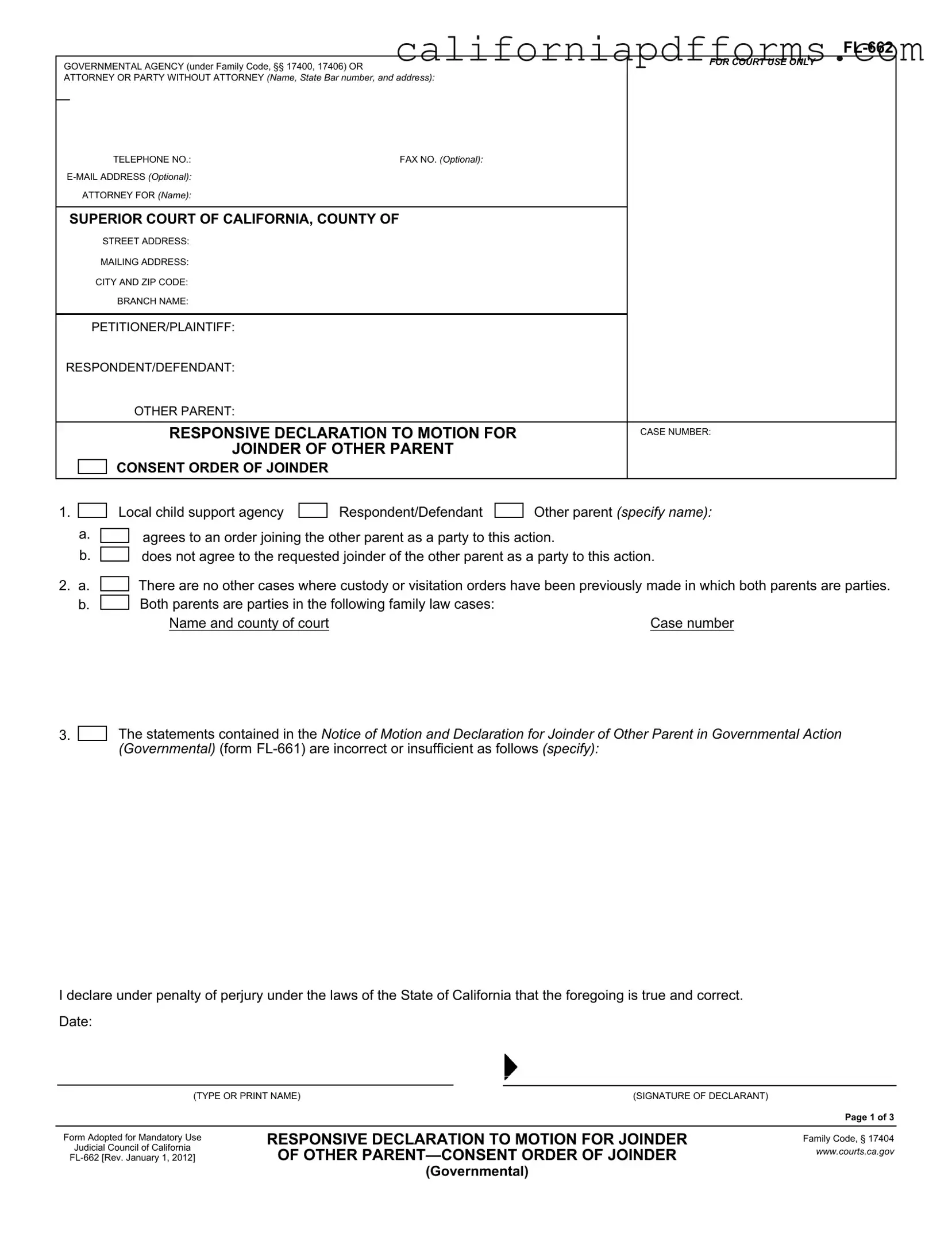The California FL-662 form is used to join another parent as a party in a family law action, particularly in cases involving child support. It allows the local child support agency, the respondent, or the other parent to consent to or contest the joinder of the other parent. This ensures that all relevant parties are included in legal proceedings regarding child support and related issues.
The FL-662 form should be filled out by any party involved in a family law case where the other parent needs to be joined. This includes the petitioner or plaintiff, the respondent or defendant, and the local child support agency. If you are seeking to have another parent included in the case, you will need to complete this form.
When completing the FL-662 form, you will need to provide:
-
Your name and contact information, including phone number and email address.
-
The names of all parties involved, including the petitioner, respondent, and the other parent.
-
Details regarding any existing family law cases involving custody or visitation orders.
-
A declaration stating whether the other parent agrees to the joinder.
Once you submit the FL-662 form, the court will review it. If the other parent consents to the joinder, the court may issue a consent order joining them as a party. If there are disputes, a hearing may be scheduled to resolve the matter. It’s important to keep track of any court dates and respond to requests promptly.
Can I contest the joinder of the other parent?
Yes, you can contest the joinder of the other parent. The FL-662 form allows you to specify whether you agree or disagree with the joinder. If you disagree, you should provide reasons for your objection. The court will consider your position before making a decision.
There is typically a deadline for submitting the FL-662 form, which depends on the specific court’s rules and the timeline of the case. It’s crucial to file the form as soon as possible to avoid delays in the proceedings. Check with your local court for specific deadlines related to your case.
